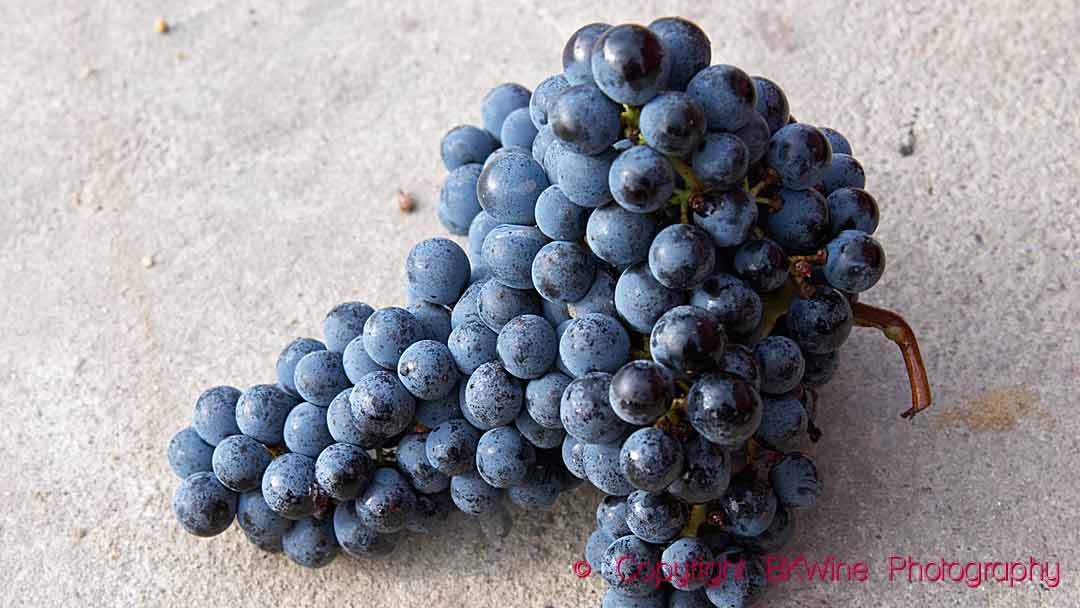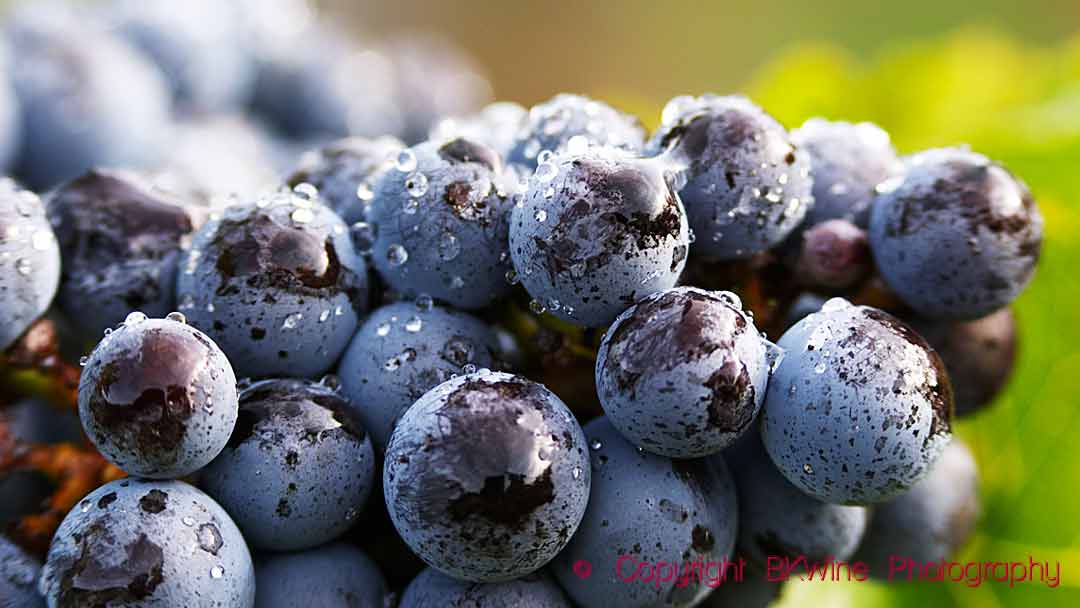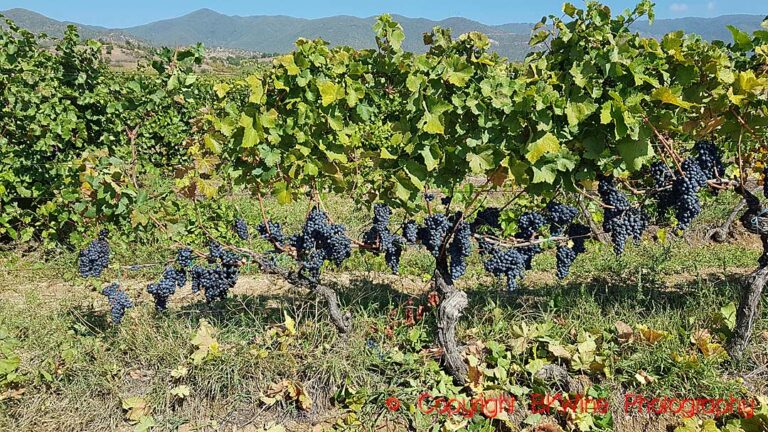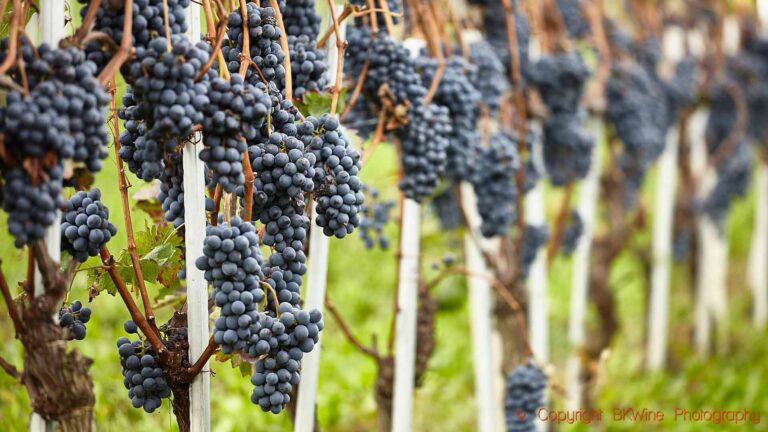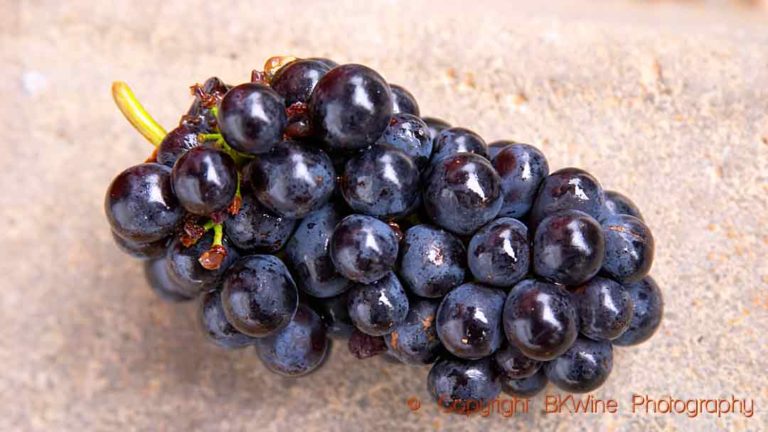I remember my first cabernet franc in France, many years ago. The restaurant served it freezing cold. It was customary at the time to keep the wines from Chinon and Bourgueil in the fridge with the white wines. A cabernet franc from the Loire was just un petit rouge, nothing serious. Well, cabernet franc came in from the cold a while back. The revenge has been sweet. There’s hardly a winemaker out there who doesn’t want to try making a cabernet franc wine. The grape’s elegance and freshness attract both producers and consumers.
Cabernet franc is often associated with Bordeaux, where it grows together with cabernet sauvignon and merlot, both close relatives. But its origin is in the Loire Valley. The author and gourmet François Rabelais from Chinon mentioned it in the 16th century, but by then, it had probably been around for a long time already.
The acreage of cabernet franc has decreased in France, from just over 36,000 hectares to 32,600 hectares, but it has increased in the rest of the world, so the world total has gone from 42,500 hectares to 56,000 hectares.
But France is by far the largest cabernet franc country. In second place is Brazil with 6,800 hectares, followed by Italy with 5,500 hectares. About fifteen countries have small plantations of the grape.
This is a longer version of an article published on Forbes.com.
This is an article in our series of presentations of the world’s most popular and exciting grape varieties. Read other articles here:
Even though there are some similarities with cabernet sauvignon, cabernet franc has its own, very distinct character. It is more aromatic and with more freshness than cabernet sauvignon. It has less tannin, but this is compensated by the lovely acidity and the crisp feeling of fresh herbs. Red berries like raspberries often dominate; you can find violets, sometimes black currants and cedar. A certain “green” taste is associated with the grape, but producers today take care not to exaggerate it by picking sufficiently ripe grapes. The time is long gone when much of the Loire cabernet franc could be thought of as a bit unripe. Although the body can be light, a cabernet franc wine often has a good backbone.
Bordeaux
In Bordeaux, cabernet franc is planted on around 10,000 hectares, just under 10% of Bordeaux’s surface. It is far behind both cabernet sauvignon and merlot. In Saint Emilion, although merlot dominates, cabernet franc plays an important role. The acidity and freshness of cabernet franc will give merlot the backbone it sometimes lacks.
Cabernet franc thrives in the clay/limestone soil on the right bank, but it also does well on gravel. However, it does not like water stress, so in very dry or hot years it can suffer. It buds and ripens earlier than cabernet sauvignon.
A typical blend in Saint Emilion is 65-75% merlot and the rest cabernet franc. The proportion of cabernet francs is lower in Médoc and Graves. Two of the prestigious chateaux in Saint-Emilion, however, stand out for their high percentage of cabernet franc: Château Cheval Blanc and Château Angélus. I remember a magnificent Château Angélus 2014 with 50% cabernet franc, incredibly fresh.
Another and more affordable cabernet franc experience is Château Tour Peyronneau Selection Pierrick Lavau from Saint Emilion. It has between 85% and 100% cabernet franc, depending on the vintage. Pierrick Lavau is the winemaker (he also owns Château Bernateau). Here, cabernet franc grows in clay soil. The vines are around 70 years old and from the original Bordeaux clone. “Usually, vineyards here have a Loire clone as the cabernet franc vines were destroyed by the severe winter of 1956”, says Pierrick.
Loire
In the Loire Valley, you find cabernet franc in Chinon, Bourgueil, Saint-Nicolas-de-Bourgueil and Saumur-Champigny. Some producers have become world-famous thanks to their cabernet franc wines. It is the most planted red variety in the Loire Valley.
Here in the Loire, it is often a refreshing red wine, light in style, and elegant. This being said, if you look around you can also find quite substantial cabernet francs here. To some extent it depends on the ambition level or style choice of the producer. Don’t serve it at fridge temperature but don’t hesitate to cool it down a little bit.
As mentioned, some producers, though, make full-bodied and structured cabernet franc vines. One of the big stars, Thierry Germain at Domaine des Roches Neuves in Saumur Champigny, is a good example. His wines are often powerful but still typical of the grape. Another favourite of ours is Domaine Filliatreau, a biodynamic winery, also in Saumur Champigny, with crispy, fruity wines, often from old vines.
Good quality cabernet franc from the Loire has ageing potential. We have recently had magnificent and vibrant wines from the 1990s. But it is not mandatory. The wines are almost invariably delicious from the day they are bottled.
A lot of cabernet franc in the Loire end up in the unpretentious rosé d’anjou.
The rest of the world
Cabernet franc is now flourishing in many countries worldwide. In Hungary, it is showing excellent results in the region of Villány. A wine producer there told us a few years ago that Michael Broadbent tasted cabernet franc from Villány in 2000. He then wrote in the English wine magazine Decanter that the grape had found a home there. No wonder the growers in Villány decided to make cabernet franc their flagship. Good they are.
In Bolgheri and other parts of the Maremma region by the Tuscan coast, it was first used in the 1970s with other Bordeaux grapes in the so-called Super Tuscans. Now it is well established in the region. One of the most famous is Paleo from Le Macchiole. The first vintage 1989 was a Bordeaux blend, but in 2001 it became a very successful (and expensive) 100% cabernet franc.
In the USA, the surface has grown a lot in the past 15 years. The US vineyards now have around 2,200 hectares of Cabernet Franc. It thrives in Washington and in the cool region of the Finger Lakes, where it has become popular in recent years.
In Chile, it is widely used in Bordeaux blends. Many winemakers here consider it to be a bit difficult, much like carmenère, which also tends to get green aromas if it is not ripe enough at harvest. You have to plant it in suitable plots. But if you plant it in the right place and treat it well it can be excellent and delicious.
”Cabernet sauvignon is better known, but cabernet franc, when planted in the right place, is much more concentrated and elegant”, says Rodrigo Romero, winemaker at Viña Maquis in Colchagua. Their cabernet franc is a beautiful example.
South Africa also makes some excellent examples. Here you have the ex-winemaker at Oldenburg Vinyeards in Stellenbosch talking about his cabernet franc:
The grape is also popping up here and there in Argentina. In a warmer climate, the typical grape aromas are less noticeable, and you have more concentration, but still, the signature freshness and elegance are there.
Acreage worldwide:
- 56,000 hectares
Main countries where cabernet franc is grown:
- France 32,600 ha
- Brazil 6,800 ha
- Italy 5,500 ha
- USA 2,200 ha
- Chile 1,500 ha
- Hungary 1,300 ha
Cabernet franc’s character:
- Refreshing red wine, often light in style and elegant. Aromatic and fresh with lovely acidity and the crisp character of fresh herbs. Raspberries, violets, sometimes black currants and cedarwood.
Travel
You can learn more about this grape variety and taste many delicious wines on one of our wine tours, for example, the fabulous wine and gastronomy tour to Bordeaux, or why not on the great adventure and wine tasting tour to Chile and Argentina, or, of course, the spectacular wine tour to South Africa’s beautiful wine regions, all with us at BKWine, of course.
Travel to the world’s wine regions with the wine experts and the wine travel specialist.
Fabulous wine and gastronomy tours. BKWine wine tours.



